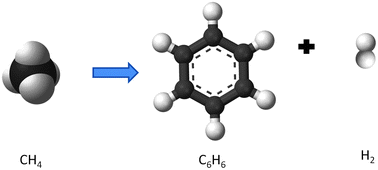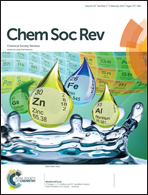Catalytic aromatization of methane
Abstract
Recent developments in natural gas production technology have led to lower prices for methane and renewed interest in converting methane to higher value products. Processes such as those based on syngas from methane reforming are being investigated. Another option is methane aromatization, which produces benzene and hydrogen: 6CH4(g) → C6H6(g) + 9H2(g) ΔGor = +433 kJ mol−1 ΔHor = +531 kJ mol−1. Thermodynamic calculations for this reaction show that benzene formation is insignificant below ∼600 °C, and that the formation of solid carbon [C(s)] is thermodynamically favored at temperatures above ∼300 °C. Benzene formation is insignificant at all temperatures up to 1000 °C when C(s) is included in the calculation of equilibrium composition. Interestingly, the thermodynamic limitation on benzene formation can be minimized by the addition of alkanes/alkenes to the methane feed. By far the most widely studied catalysts for this reaction are Mo/HZSM-5 and Mo/MCM-22. Benzene selectivities are generally between 60 and 80% at methane conversions of ∼10%, corresponding to net benzene yields of less than 10%. Major byproducts include lower molecular weight hydrocarbons and higher molecular weight substituted aromatics. However, carbon formation is inevitable, but the experimental findings show this can be kinetically limited by the use of H2 or oxidants in the feed, including CO2 or steam. A number of reactor configurations involving regeneration of the carbon-containing catalyst have been developed with the goal of minimizing the cost of regeneration of the catalyst once deactivated by carbon deposition. In this tutorial review we discuss the thermodynamics of this process, the catalysts used and the potential reactor configurations that can be applied.


 Please wait while we load your content...
Please wait while we load your content...